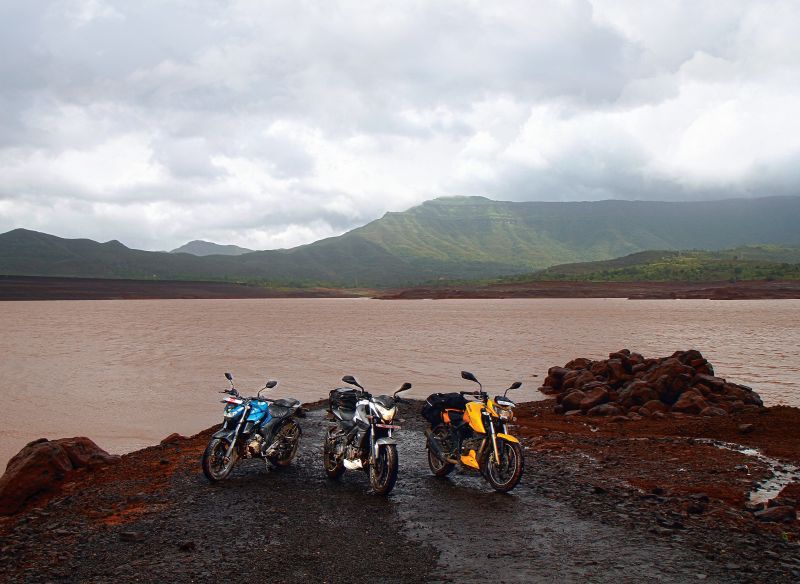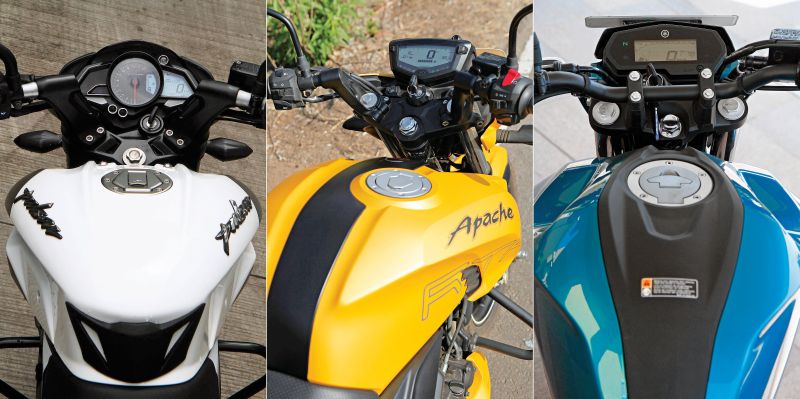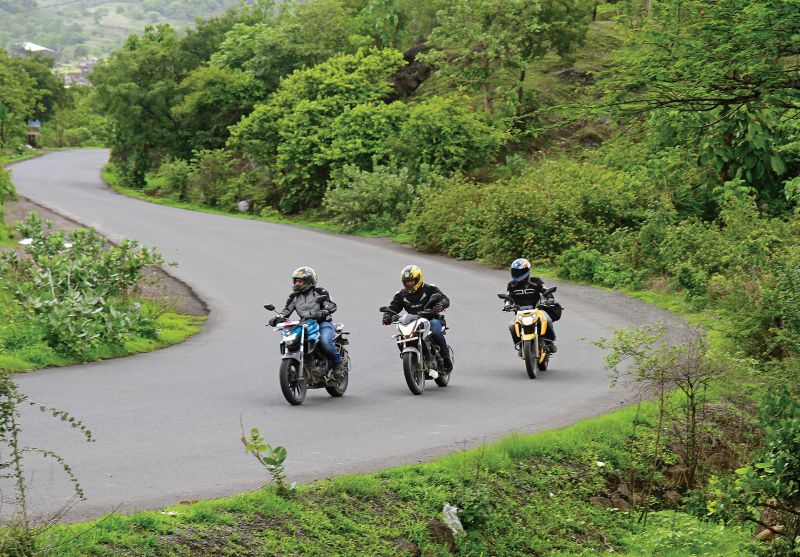
One has to give credit to Yamaha for their fit and finish. We can say that with experience. Earlier, we’ve used several other Yamaha bikes, and can say with conviction that those things are built to last. Even on the FZ25, the quality of switchgear, aesthetic design, and overall attention to detail are top-notch.
The TVS isn’t too far apart and its buttons and switches, too, have a nice feel to them and won’t wear down easily. This is not to say that the Bajaj is lacking in quality, but the others feel a smidge better in this department. The advantage the Bajaj has is the backlit switchgear, which is useful in the dark.
Staying on the topic of features, the Pulsar has an analogue-digital console which offers basic information such as trip meter, clock, fuel-gauge and red-line indicator. The FZ25 offers a completely digital unit, albeit a very basic one. The only additional information it has is fuel economy and average for trip meter. It’s the RTR which has the most comprehensive console with additional info such as a lap timer, top speed recorder and gear indicator. The FZ25 and NS 200 both offer tyre huggers which avoid spraying while riding on wet roads, although we have noticed many an enthusiast remove it for the sake of aesthetics.

Finally, the powerplant. The FZ25 sports a 249-cc air-cooled single, which is mated to a five-speed gearbox. It’s equipped with fuel-injection and delivers 20.9 PS at 8,000 rpm. The Apache with its air-cooled 197.7 motor and four-valve engine (the Yamaha has two valves) churns out similar power but at a higher rpm, thus making the Pulsar the most powerful bike in this fist-fight, where its four-valve, liquid-cooled unit, breathing through the carburettor, punches out 23.5 PS at 9,500 rpm. Interestingly, the FZ25 makes the most torque, 20 Nm to be precise, which is two Nm more than the others.
Using the extra cubic capacity the Yamaha produces these power and torque figures at lower revs. This gives it a relaxed power delivery, making the FZ25 the most refined among the trio. It doesn’t demand a down-shift while slowing down a little and it pulls seamlessly even from lower speeds. Twist the throttle and there’s enough torque to set you sailing again without the engine knocking. It’s a simple and sweet motorcycle which is difficult not to like.

The Apache is a complete contrast. It has the sportiest nature, always buzzing and pushing you to wring the throttle and have more fun. The track is its playground. The raspy exhaust note and quick throttle response make it the most involving bike here. The Pulsar has a similar temperament but is a mite more docile. Being taller and heavier, it has more traces of an adventure bike than a track tool or a street bike. The TVS and the Pulsar ensure that the rider feels every ounce of power being developed. Since they have to be revved higher to achieve peak performance, this makes them both vibey, especially in lower gears.
Since the NS 200 is the only bike here offering a sixth gear, it feels most comfortable on the highway doing three-digit speeds. This is where both the Yamaha and TVS leave you wanting for another gear to shift up to. The top whack we could achieve on the Apache was 125 km/h, the FZ managed a slightly better 129 km/h, while the Pulsar slayed them, using the extra cog to record 133 km/h on the testing equipment.

